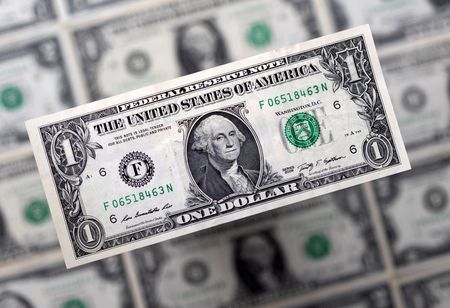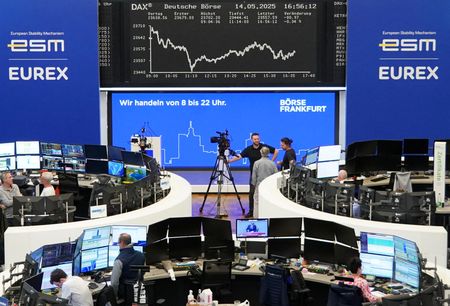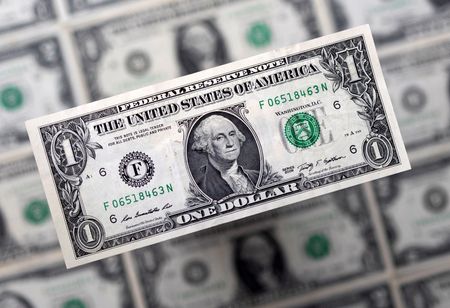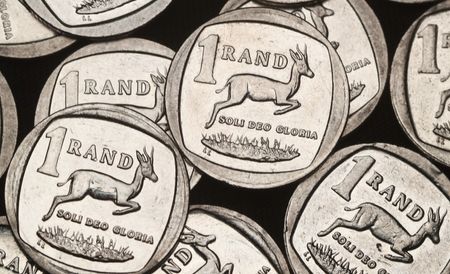By Ankur Banerjee
TOKYO (Reuters) -The dollar weakened on Thursday in a turbulent week headlined by a U.S.-China tariff truce, while speculation that Washington is seeking a weaker dollar as part of some of the trade deals spurred further gains in the South Korean won.
The Asian currency was volatile again as investors weighed the news that officials from South Korea and the U.S. met last week to discuss the dollar/won exchange rate.
That spurred speculation that Washington wanted a weaker dollar to be part of trade talks with Asian countries, although a report from Bloomberg played it down.
Still, concerns over the U.S. administration’s dollar policy is likely to keep investors wary and underpin Asian currencies in the near term.
The won was 0.8% higher at 1,396.22 per dollar after a 0.6% rise in the previous session. The won was the worst performer among emerging Asian currencies last year, dropping 14% against the dollar but is up nearly 6% this year.
The sudden lurch in the won was reminiscent of an unprecedented two-day surge in Taiwan’s currency at the start of May, which also coincided with the end of U.S.-Taiwan trade talks in Washington.
“Reports of currency discussions between the U.S. and South Korea, coupled with signs the Trump administration may tolerate a weaker dollar, have fuelled won sentiment,” said Kieran Williams, head of Asia FX at InTouch Capital Markets.
“Broader uncertainty around the domestic outlook and trade tensions could temper the won’s upside near term.”
While the dollar has clawed back some of its recent losses against the euro, pound and the yen that were driven by concerns over President Donald Trump’s economic policies, it has slipped against most of the emerging market currencies.
The Mexican peso was last at 19.38 per dollar, hovering near the seven-month high it scaled in the previous session.
The Japanese yen strengthened 0.3% to 146.32 per dollar but remained close to the one-month low of 148.65 touched earlier this week.
The dollar index, which measures the U.S. unit against six other currencies, was 0.11% lower at 100.89, but on course for the fourth straight week of gains.
Investor focus on Thursday will be on retail sales data while they look for more details on possible trade deals after easing of tensions between the U.S. and China.
The two countries on Monday announced a 90-day pause on most of the tariffs imposed on each other’s goods since early April, leading to a brief relief rally.
“We consider there is more upside to the dollar in the near term as market participants reassess the outlook for the U.S. and global economies following the temporary U.S.‑China trade deal,” said Kristina Clifton, an economist at the Commonwealth Bank of Australia.
“The USD index could lift by another 2%‑3% in the next few weeks. We expect the euro, pound and yen to bear the brunt of the dollar’s recovery.”
U.S. Treasury yields were elevated and the benchmark 10-year yield rose to a one-month top, in part due to worries over Trump’s budget package that would add trillions of dollars to the U.S. debt.
Down Under, the Australian dollar swung higher again after a surprisingly strong reading on employment added to the case against rapid-fire rate cuts in coming months, though an easing is still widely expected next week.
The Aussie was 0.22% higher at $0.64425, while the New Zealand dollar rose 0.17% at $0.5908.
(Reporting by Ankur Banerjee in TokyoEditing by Shri Navaratnam)










